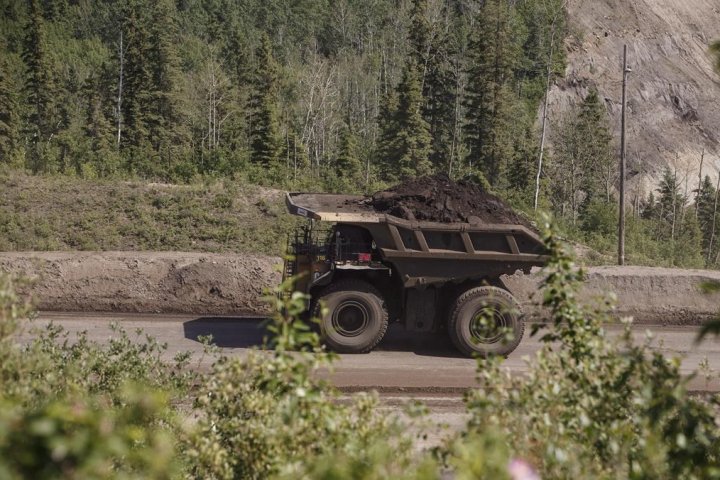
An industry that has employed thousands of Canadians, generated billions of dollars worth of economic investment and annual government revenues now finds itself staring down perhaps it’s biggest challenge yet: dramatically slashing greenhouse gas emissions in a relatively short timeframe.
Read more: Net-zero power system in Alberta ‘possible’ by 2035 but pricey: report
Read More
Alberta’s oilsands sector generates around 70 million tonnes of emissions each year — around one-tenth of Canada’s entire emissions profile.
The industry itself has acknowledged it needs to dramatically cut those emissions, and that was a main topic of conversation at the annual Oil Sands Conference and Trade Show in Fort McMurray.
“With what we’ve solved in the last five decades, I’m not too concerned our industry won’t solve this next one,” Drew Zieglgansberger told a luncheon audience on the second day of the conference.
Zieglgansberger is an executive vice-president with Cenovus Energy and oversees the company’s environmental innovations.
Cenovus is one of six major oilsands operators which have teamed up to form the Pathways Alliance, a team effort to achieve net zero by 2050.
The others involved are Suncor, Canadian Natural Resorces, MEG Energy, Imperial Oil and ConocoPhillips. The six companies operate about 90 per cent of Canada’s oilsands production.
“If you think back to the oilsands from decades ago, I think a lot of people were looking to understand, ‘How do we make this economically viable?’” Zieglgansberger told Global News at the oil sands conference.
“The challenge we have today is people are asking, ‘Can you make this environmentally viable?’”

The Pathways Alliance has some early thoughts on how to get there.
The first foundational project involves installing carbon capture, utilization and storage technology on eleven different facilities, and piping those emissions to an underground storage site more than 200 kilometres south near Cold Lake.
“It’s going to take carbon capture and storage, it’s going to take small modular nuclear reactors, it’s going to take innovation and automated A.I. learning, it’s going to take all of the above,” Zieglgansberger said.
This will require significant support from government.
Ottawa has already outlined the design of a tax credit for carbon capture technology, and the Alberta government has announced a series of investments from its TIER fund — the province’s levy on heavy emitters — to help industry fund projects to drive down emissions.
The trade show attached to the conference included hundreds of delegates from businesses that contract their services to the oilsands sector, eager to help in this challenge.
“We’re a bit of an innovative chemical supplier,” Curt Benson told Global News at the trade show.
Benson is the sales manager for chemical supply company Novamen, based out of Blackfalds in central Alberta.
They not only provide traditional solvents to the industry, but ones that help companies improve their environmental profile — from dust control to removing H2S from water.
“It’s a plant-based product, completely harmless, doesn’t change the water in any way, shape or form,” Benson said.
© 2022 Global News, a division of Corus Entertainment Inc.



